
T he 20th century wrought havoc on religious and spiritual life in mainland China, especially during the Cultural Revolution. Temples were torn down, believers persecuted and priests, monks and nuns subjected to violence and forced to renounce their religious ways. It must have seemed as though all traditional religious practices would vanish from the country.
Return of religion to China since the death of Mao documented in new book The Souls of China. By following individual monks and priests, Pulitzer Prize-winning author Ian Johnson personalises his account of the reawakening of religious belief and practices in China.
Allen Lane 13 APR 2017 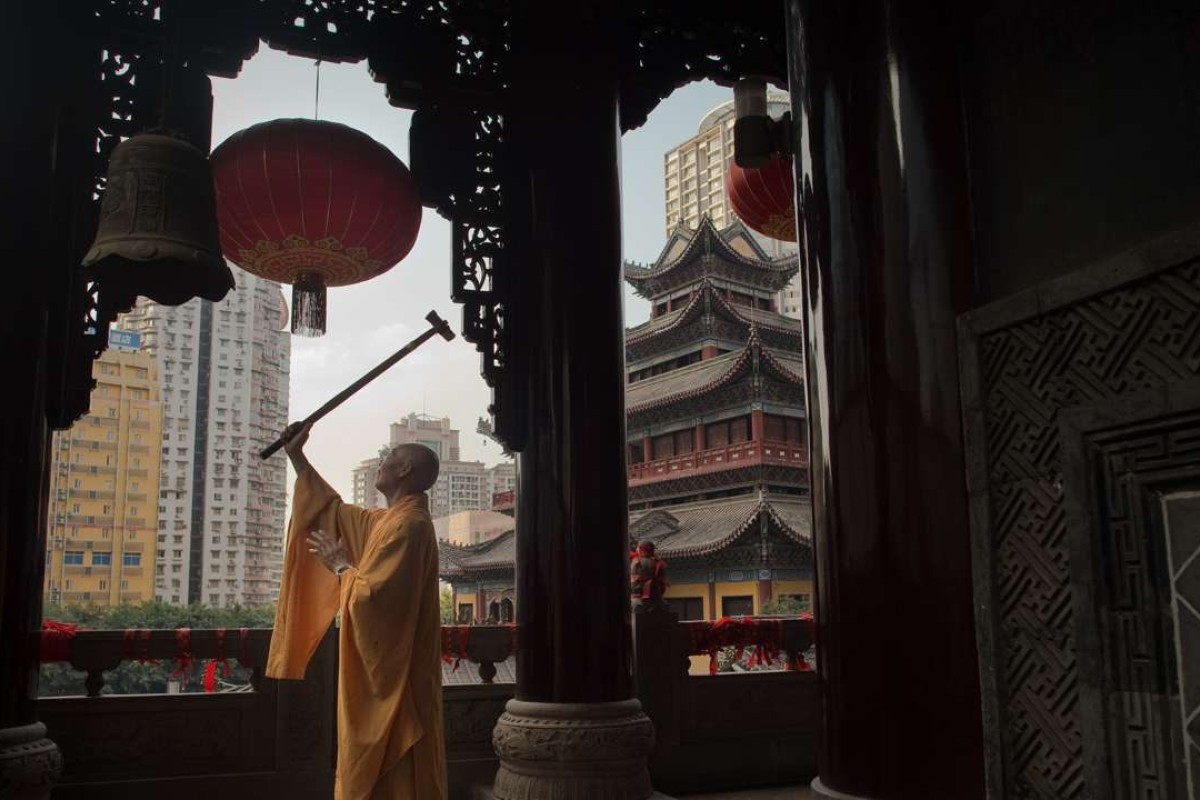

A buddhist monk rings a bell with a wooden hammer at the Arhat temple in Chongqing. AFP
Yet, since the late 1970s, religion has slowly been returning to China, as millions of Chinese search for something other than material wealth. Some have looked to old religions such as Taoism and Buddhism while others have turned to a more modern import, Christianity, for answers.
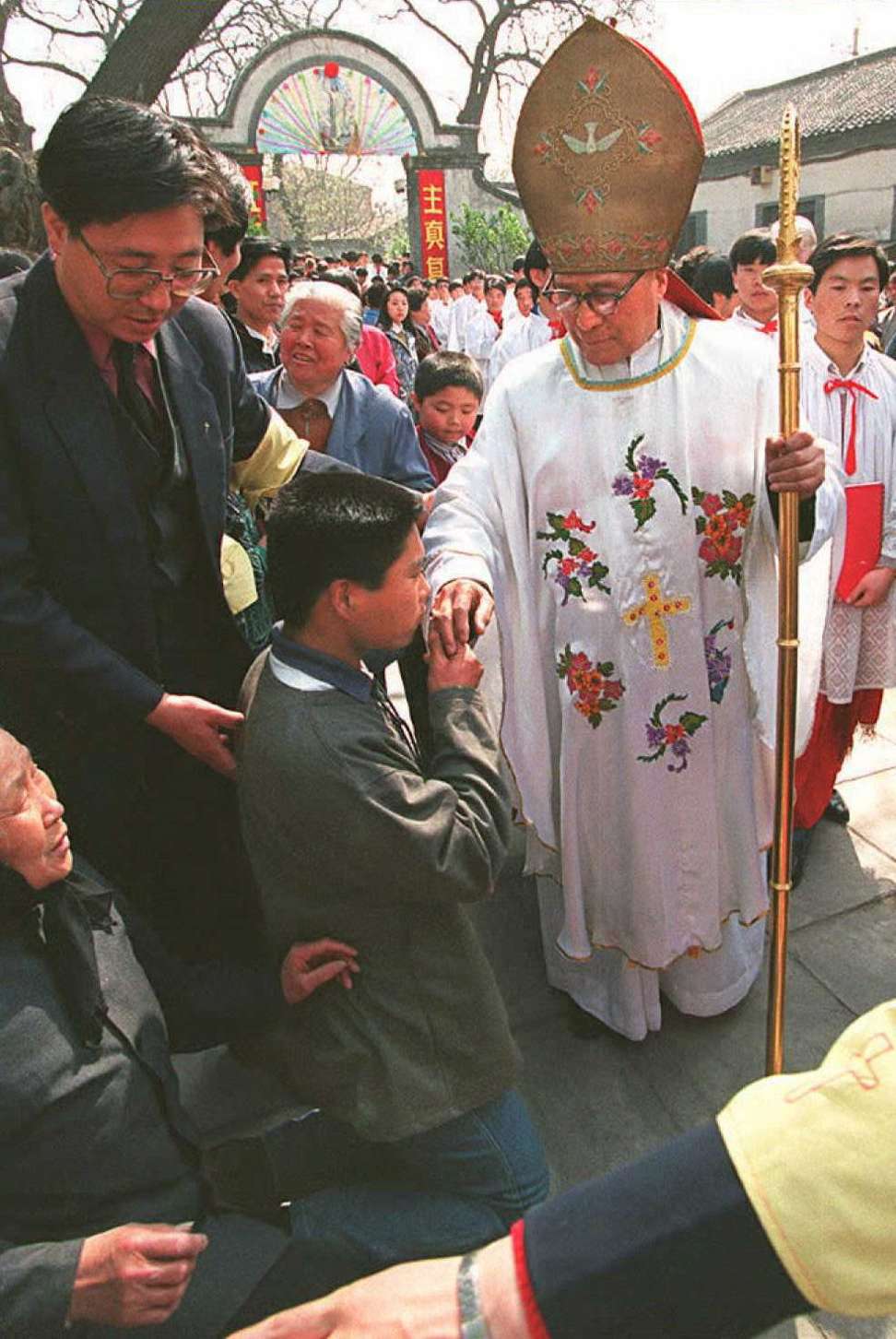
A Chinese Catholic kneels to kiss the ring of Bishop Zong Huaide after the Easter service at Beijing's Xuanwumen Patriotic Catholic Church. Picture: AFP
“Across China, hundreds of temples, mosques and churches open each year, attracting millions of new worshippers,” writes Ian Johnson in The Souls of China: The Return of Religion After Mao.
Government policies now in place seem to encourage traditional Chinese values, or at the very least offer a grey area in which they can flourish.
Johnson, a Pulitzer Prize-winning journalist and correspondent for The New York Times and The New York Review of Books, has spent years delving into this resurgence of faith and, in The Souls of China, he attempts to explore the ways in which this return has manifested itself, as well as the role played by those who still remember the practices as passed down through the generations. The book also touches on the survival of traditional practices as more and more Chinese move to the cities, and the role of the state in religious affairs.
“Across China, hundreds of temples, mosques and churches open each year, attracting millions of new worshippers,” writes Ian Johnson in The Souls of China: The Return of Religion After Mao.
Government policies now in place seem to encourage traditional Chinese values, or at the very least offer a grey area in which they can flourish.
Johnson, a Pulitzer Prize-winning journalist and correspondent for The New York Times and The New York Review of Books, has spent years delving into this resurgence of faith and, in The Souls of China, he attempts to explore the ways in which this return has manifested itself, as well as the role played by those who still remember the practices as passed down through the generations. The book also touches on the survival of traditional practices as more and more Chinese move to the cities, and the role of the state in religious affairs.
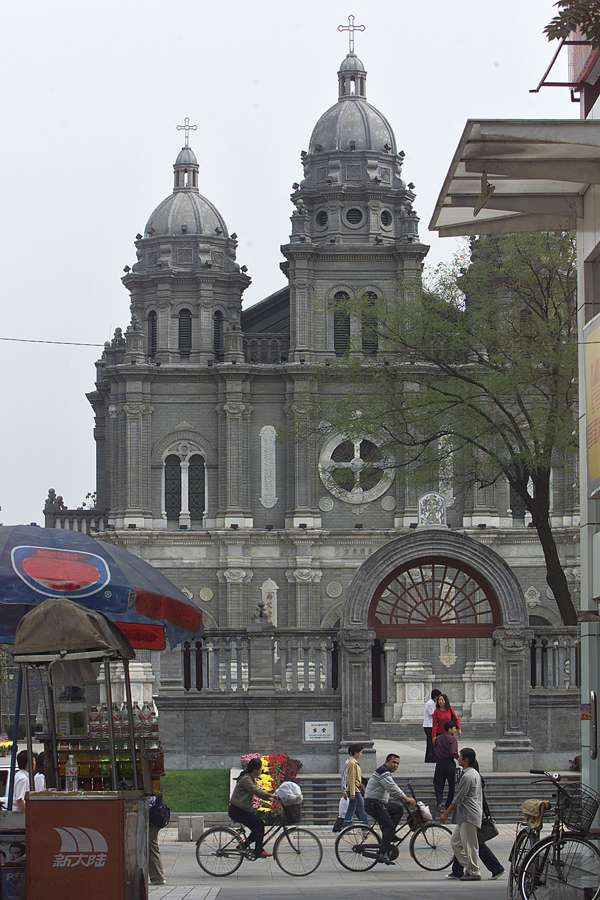
Cyclists ride past Beijing's official “patriotic” Catholic East Church. Picture: AFP
The Communists didn’t begin the destruction of religious life – half of the country’s one million temples were destroyed, shuttered or converted to other uses before 1949, as China cast aside traditions in the face of Western power and modernity – the process reached its peak during the 1960s and 70s. Then “when the chaos ended with Mao’s death in 1976, religious life slowly resumed”.
Rather than a top-down academic approach, Johnson focuses on a handful of individuals who are deeply involved in the re-emergence of Christianity, Buddhism and Taoism (Islam is, sadly, absent due to the difficulty of spending time in the northwest of the country), following them through the seasons and stages of a full lunar year.
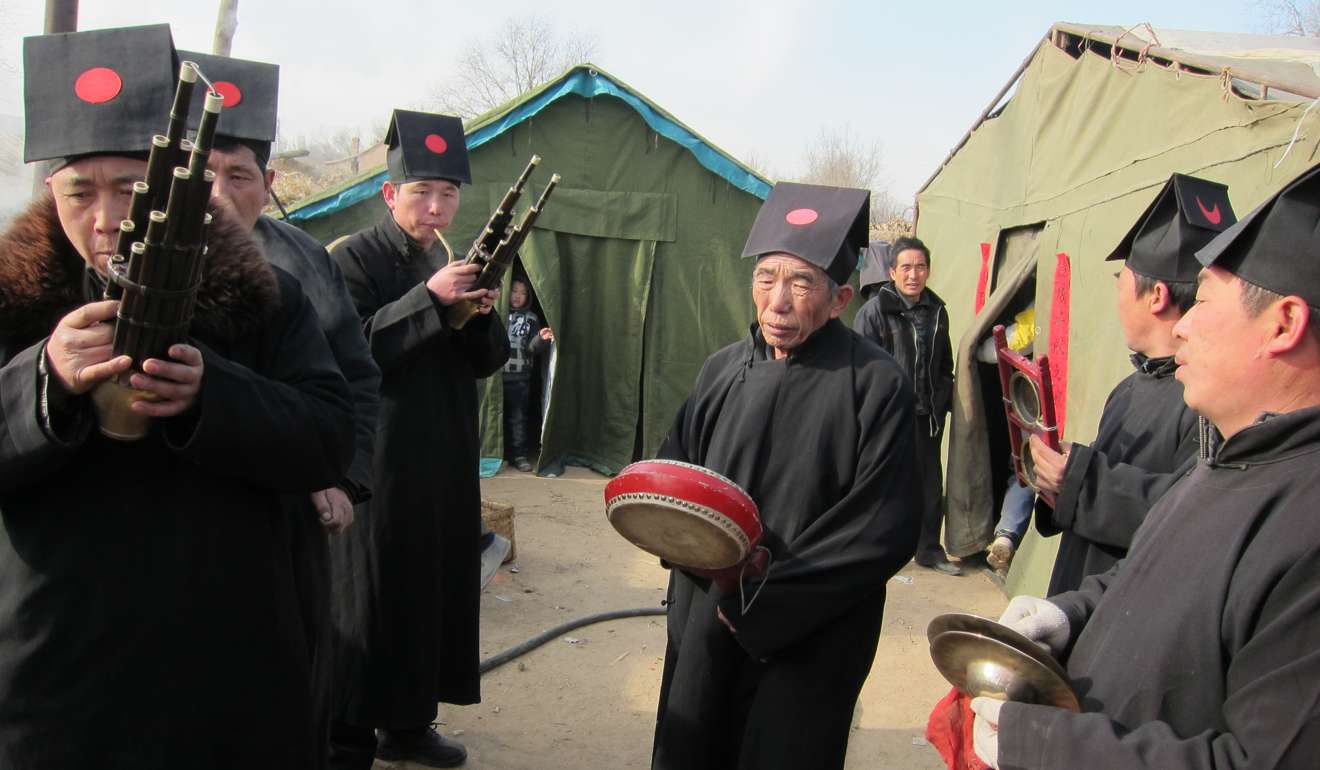
Old Mr Li, a practising Taoist yinyang, part funeral master, part fortune-teller and part geomancer. The family gathers regularly to perform funeral rituals for mostly elderly men and women. Picture: Ian Johnson
Among those Johnson follows are the Ni family, who live beside Fenzhongsi, the Temple of the Tolling Bell, in Beijing. In 1993, Old Mr Ni, having been diagnosed with kidney cancer, vowed that if he survived he would make a pilgrimage to Miaofengshan,a holy site on the outskirts of Beijing. Ever since, he and his familyhave been a key part of the revival of the annual temple pilgrimage, staying on the mountain for 15 days at the beginning of every lunar year, offering tea to pilgrims.
“That was how religious life had been reborn in China, by these single, heroic acts,” Johnson writes, referring also to the story of Old Mrs Chen, who, beginning in the 1980s, rode her pedal-powered trishaw the 65km from her Beijing home to Miaofengshan, to deliver flowers to Our Lady of the Azure Clouds. Now in her 80s, she is still a major presence during the pilgrimage, spending two weeks at the site and thousands of yuan of her own money on flowers. Johnson describes her during the pilgrimage period as being “like a priestess, a mediator between heaven and Earth”.
Among those Johnson follows are the Ni family, who live beside Fenzhongsi, the Temple of the Tolling Bell, in Beijing. In 1993, Old Mr Ni, having been diagnosed with kidney cancer, vowed that if he survived he would make a pilgrimage to Miaofengshan,a holy site on the outskirts of Beijing. Ever since, he and his familyhave been a key part of the revival of the annual temple pilgrimage, staying on the mountain for 15 days at the beginning of every lunar year, offering tea to pilgrims.
“That was how religious life had been reborn in China, by these single, heroic acts,” Johnson writes, referring also to the story of Old Mrs Chen, who, beginning in the 1980s, rode her pedal-powered trishaw the 65km from her Beijing home to Miaofengshan, to deliver flowers to Our Lady of the Azure Clouds. Now in her 80s, she is still a major presence during the pilgrimage, spending two weeks at the site and thousands of yuan of her own money on flowers. Johnson describes her during the pilgrimage period as being “like a priestess, a mediator between heaven and Earth”.

Old Mrs Chen (right) spends two weeks every year at the Miaofengshan pilgrimage site, spending thousands of yuan on flower offerings. Picture: Ian Johnson
Johnson also spends time in Shanxi province, with a family of Taoist yinyangmen, a dying profession that is part funeral master, part fortune-teller and part geomancer.
Li Bin, 35, is a ninth-generation yinyangman, caught between the rural world his father occupies and the city life that represents the future. The family gathers regularly to perform funeral rituals, elaborately decorating the coffins with text, performing funereal music and burying the bodies at just the right time and place as governed by ancient practices. There are few left today who have the knowledge and skill to perform these once-important rituals. Li could be the last in his family.
Then there is Wang Yi, a charismatic preacher who leads an expanding Christian congregation in Chengdu, Sichuan province. A former human rights lawyer, Wang is setting up a seminary to train priests while also guiding his flock. He has to carefully manage relations with the authorities, who keep a close eye on developments.
Johnson also spends time in Shanxi province, with a family of Taoist yinyangmen, a dying profession that is part funeral master, part fortune-teller and part geomancer.
Li Bin, 35, is a ninth-generation yinyangman, caught between the rural world his father occupies and the city life that represents the future. The family gathers regularly to perform funeral rituals, elaborately decorating the coffins with text, performing funereal music and burying the bodies at just the right time and place as governed by ancient practices. There are few left today who have the knowledge and skill to perform these once-important rituals. Li could be the last in his family.
Then there is Wang Yi, a charismatic preacher who leads an expanding Christian congregation in Chengdu, Sichuan province. A former human rights lawyer, Wang is setting up a seminary to train priests while also guiding his flock. He has to carefully manage relations with the authorities, who keep a close eye on developments.
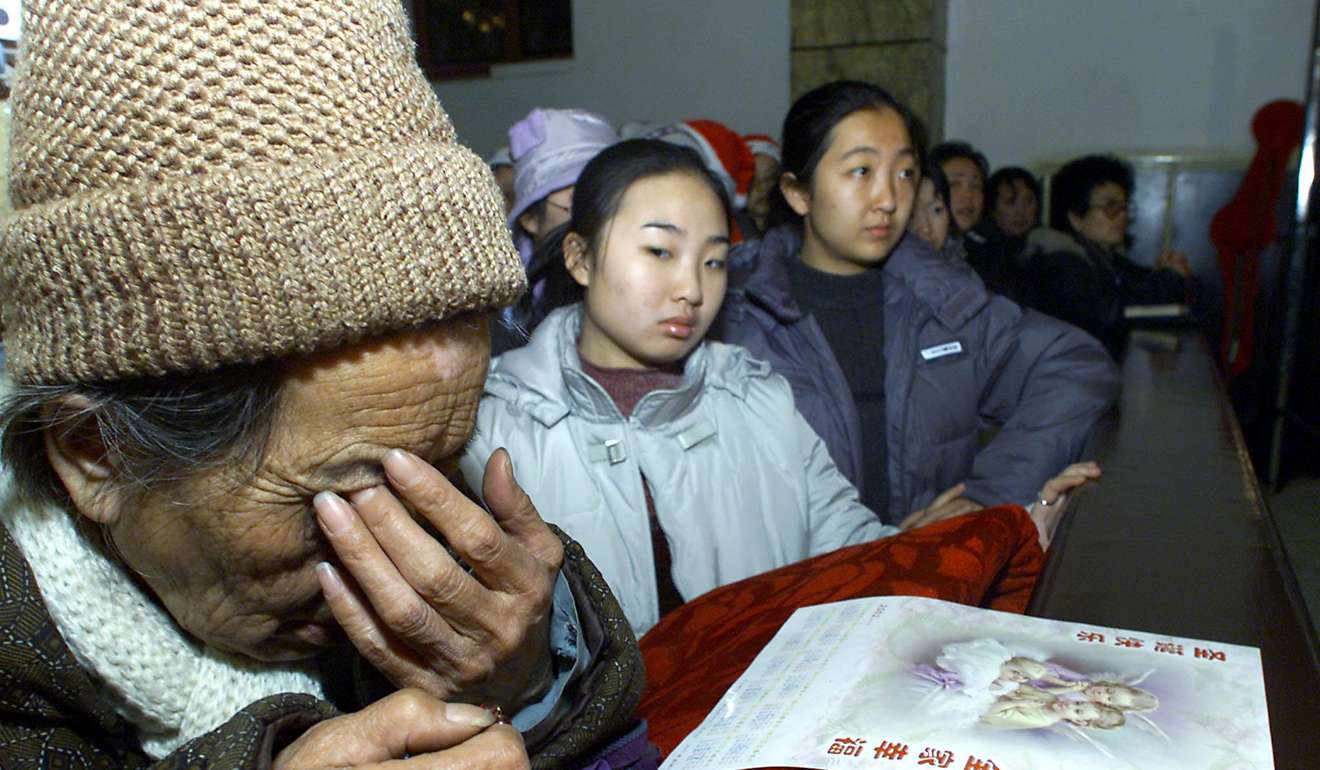
An elderly Chinese man wipes tears from his eyes as he offers prayers during a Christmas Eve mass at the Beijing Southern Cathedral. Picture: AFP
While religious practices have been allowed to return to the mainland, there is still a cautiousness, especially when it comes to foreign involvement in such activities (and the example of the Falun Gong is always there, for those religious groups who might consider growing too large or becoming too independent from the state).
Throughout the book, Johnson is by his subjects’ sides as they search for greater meaning or perform age-old rituals. He engages in Buddhist and Taoist meditation, seeking his own answers, and he attends a retreat with a 94-year-old Taoist, Nan Huai-chin, who is described as China’s most famous contemporary sage. He also attends a meditation course in caves in southern China.
The Chinese, in an effort to catch up with the West, have discarded many of their traditions and instead tried out new ideologies “like suits of clothes” – warlordism, fascism, communism and “authoritarian capitalism”. Many are now wondering what has been lost and who they really are.
Johnson writes, “Hundreds of millions of Chinese are consumed with doubt about their society and turning to religion and faith for answers that they do not find in the radically secular world constructed around them.”
While religious practices have been allowed to return to the mainland, there is still a cautiousness, especially when it comes to foreign involvement in such activities (and the example of the Falun Gong is always there, for those religious groups who might consider growing too large or becoming too independent from the state).
Throughout the book, Johnson is by his subjects’ sides as they search for greater meaning or perform age-old rituals. He engages in Buddhist and Taoist meditation, seeking his own answers, and he attends a retreat with a 94-year-old Taoist, Nan Huai-chin, who is described as China’s most famous contemporary sage. He also attends a meditation course in caves in southern China.
The Chinese, in an effort to catch up with the West, have discarded many of their traditions and instead tried out new ideologies “like suits of clothes” – warlordism, fascism, communism and “authoritarian capitalism”. Many are now wondering what has been lost and who they really are.
Johnson writes, “Hundreds of millions of Chinese are consumed with doubt about their society and turning to religion and faith for answers that they do not find in the radically secular world constructed around them.”
No comments:
Post a Comment